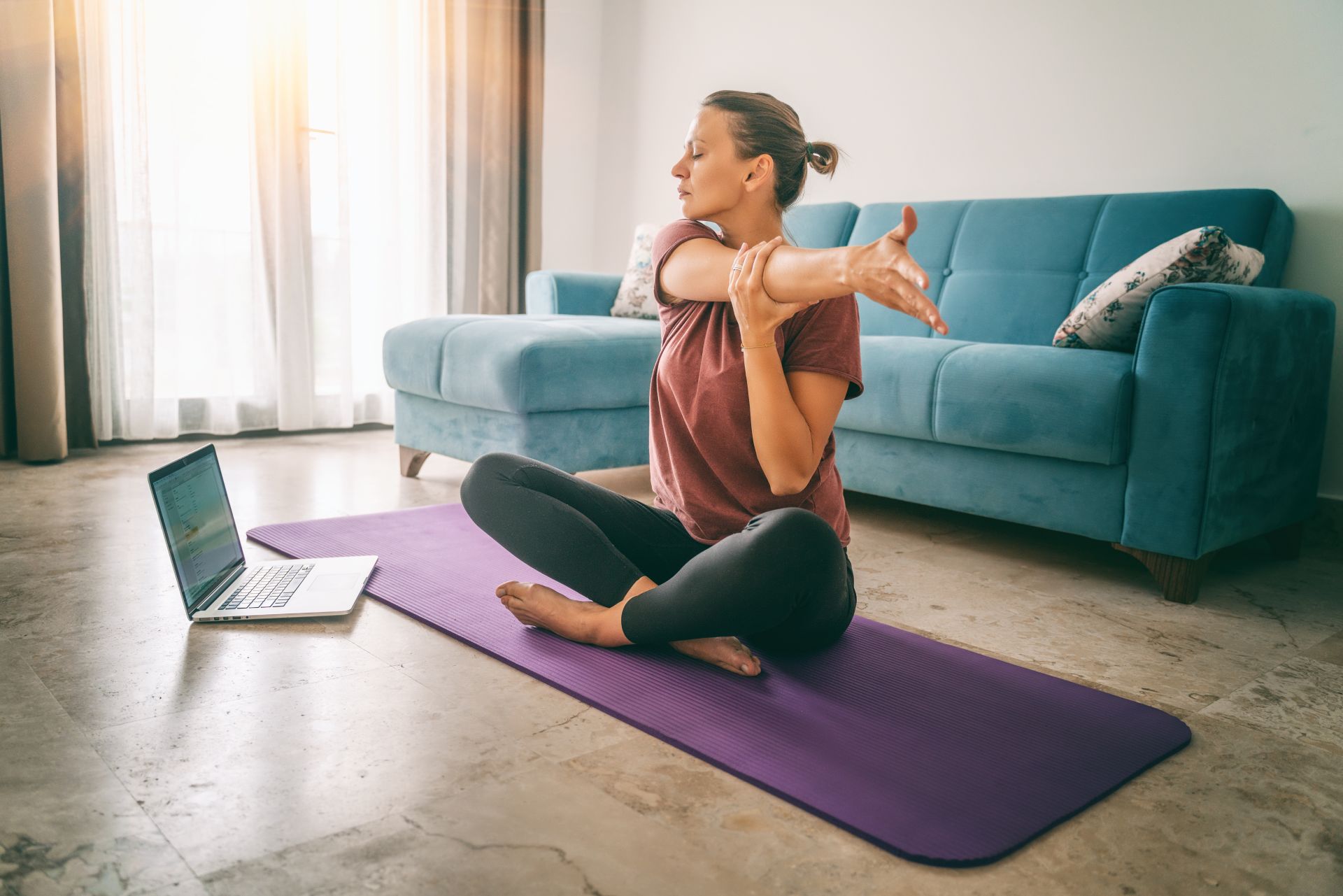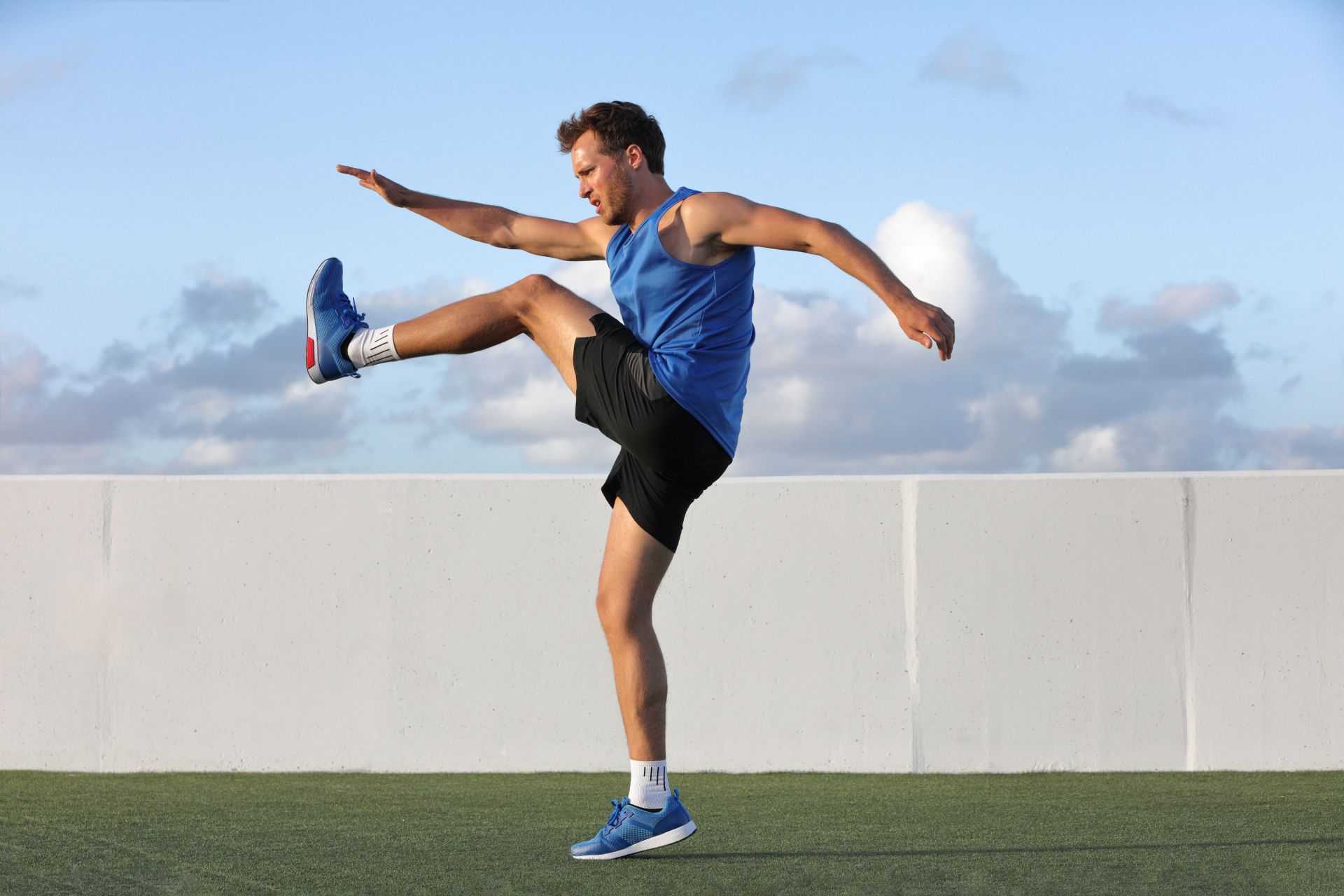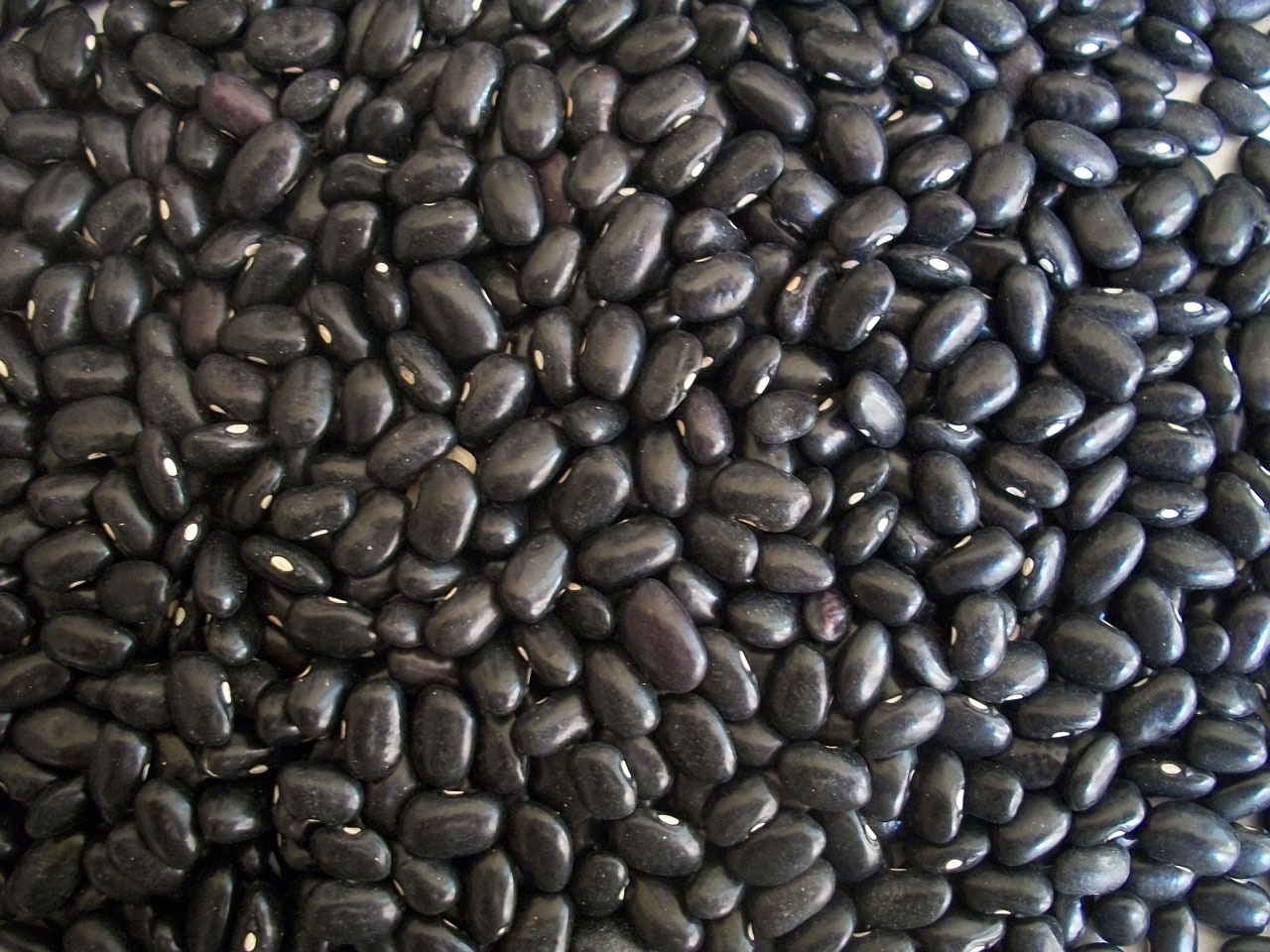Stretching - why is it worth it?

Exercise sessions usually begin with a warm-up, followed by the main workout, and end with a calming phase that includes a gradual reduction in exercise and intensity. Stretching is recommended as an essential part of the body's cool-down phase after an intense workout. So let's find out what stretching is and why it's a good idea to stretch your entire body regularly.
- What is stretching and what does it consist of?
- Static stretching
- Dynamic stretching
- What are the benefits of stretching?
- Why is it important to stretch regularly?
- Stretching - contraindications
What is stretching and what does it consist of?
Stretching (English: stretching) is a set of specific physical exercises that involve stretching muscles in order to stimulate and make them more flexible, as well as to improve blood circulation. Stretching exercises are one of the most intuitive and at the same time relaxing forms of physical activity, which does not require putting in a lot of effort. Stretching involves working (tensing) a skeletal muscle isometrically for several seconds, and then slowly relaxing and stretching it for another several tens of seconds. A standard full-body stretching session usually lasts several to several minutes. Stretching all of the muscles is a natural protection against body stiffness and injury, as well as an excellent form of treatment for musculoskeletal conditions characterized by excessive muscle tension and movement restrictions.
Static stretching
Static stretching involves holding one body position for a set period of time, usually 10 to 30 seconds. Static stretching exercises are most beneficial after the core workout to cool down the body, calm the nervous system and relax the muscles, and reduce the risk of injury. Static stretching is therefore a type of activity based on slow and gentle movements of the body, which initiates the post-workout recovery process.
Dynamic stretching
Dynamic stretching is active movements of the body that cause the muscles to stretch, but the stretch itself is not held in its final position. Dynamic stretching exercises are usually performed as part of a warm-up before the start of a training session to prepare skeletal muscles for the main exercise. Dynamic stretching is based on rapid body movements that lead to stimulation of blood circulation, elongation of muscles and increased joint mobility. Dynamic stretching exercises should be started with slower movements and then gradually increased in speed, range and intensity. Both dynamic and static stretching have been shown to be effective when the goal is to increase the range of motion in the joints of the upper and lower extremities and spine.

What are the benefits of stretching?
It is well known that stretching improves muscle flexibility and joint range of motion, so it can help you perform everyday activities. Muscle stretching can also delay limited mobility, which often occurs as a result of the irreversible process that is aging. Systematic stretching can improve blood circulation and increase blood flow in skeletal muscles, which can reduce delayed muscle soreness (known as DOMS) and significantly reduce post-exercise recovery time. Performing dynamic stretching as part of a warm-up before intense training has been shown to help prepare skeletal muscles for planned physical activity. Properly selected stretching exercises by a qualified professional can also help improve performance during a training session or sports competition. In addition, it has been found that a skillful combination of strengthening and stretching of specific muscle groups can reduce musculoskeletal pain and can promote good posture. It is worth mentioning that neuromuscular imbalance or instability is common in people with sedentary lifestyles and can lead to poor posture. Regular muscle stretching can be a great way to relieve muscle pain and tension, increase joint range of motion and overall fitness, and improve posture in people who spend a lot of time during the day in a sedentary position.
Why is it important to stretch regularly?
Stretching after exercise (known as cooling down) is commonly recommended to improve recovery of muscle strength and range of motion and reduce delayed muscle soreness. The current 2018 American Institute of Sports Medicine (ACSM) and 2020 American Heart Association (AHA) guidelines recommend stretching as an essential part of the body's cool-down and quieting phase after an intense workout. There are many reasons to stretch regularly. Systematic stretching of the body can help increase muscle flexibility and joint range of motion, as well as improve overall fitness and control and maintenance of posture. In addition, muscle stretching reduces tension (especially in the neck, shoulder, upper and lower back areas), calms the mind and relieves stress and lower back pain, as well as reducing tension headaches. ** Muscle stretching deepens body awareness, quiets nervous system activity, improves mental and physical well-being and the ability to focus attention.
Stretching - contraindications
However, stretching is not always recommended and safe for health. This is especially true if there is an acute injury (such as a soft tissue injury) or a chronic and troublesome injury. It is then necessary to follow the recommendations of a sports medicine doctor and physiotherapist and perform only those stretching exercises that are individually tailored to the needs of the injured person. Besides, in situations where there are any fitness limitations and health problems that prevent the proper performance of stretching exercises, it is worth consulting a sports medicine specialist on the selection of alternative forms of physical activity that can help increase the flexibility of the upper and lower body.
Sources:
-
Afonso J, Olivares-Jabalera J, Andrade R.: Time to Move From Mandatory Stretching? We Need to Differentiate "Can I?" From "Do I Have To?". Front Physiol. 2021 Jul 22;12:714166.
-
Afonso J, Clemente FM, Nakamura FY, et al: The Effectiveness of Post-exercise Stretching in Short-Term and Delayed Recovery of Strength, Range of Motion and Delayed Onset Muscle Soreness: A Systematic Review and Meta-Analysis of Randomized Controlled Trials. Front Physiol. 2021 May 5;12:677581.
-
Page P.: Current concepts in muscle stretching for exercise and rehabilitation. Int J Sports Phys Ther. 2012 Feb;7(1):109-19.
-
Andersen JC.: Stretching before and after exercise: effect on muscle soreness and injury risk. J Athl Train. 2005 Jul-Sep;40(3):218-20.
-
Herbert RD, de Noronha M, Kamper SJ: Stretching to prevent or reduce muscle soreness after exercise. Cochrane Database Syst Rev. 2011 Jul 6;7):CD004577.
 ⮜ Previous article
⮜ Previous article
Black beans - health properties
 Next article ⮞
Next article ⮞